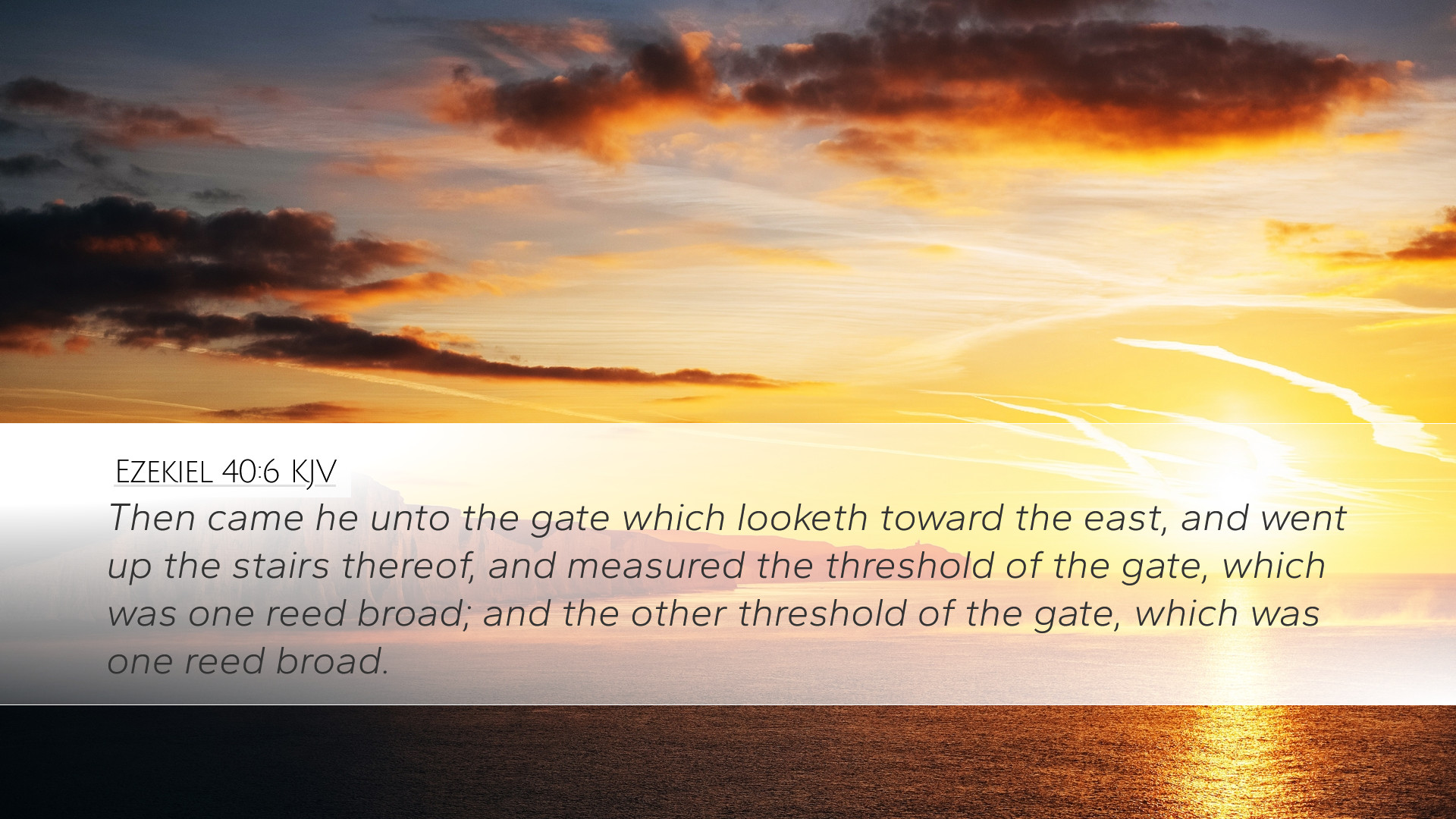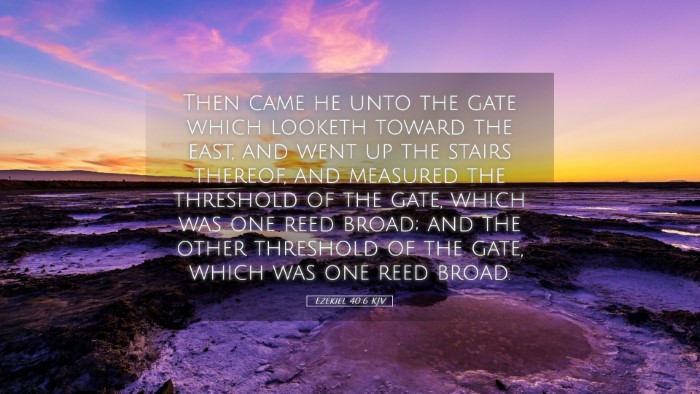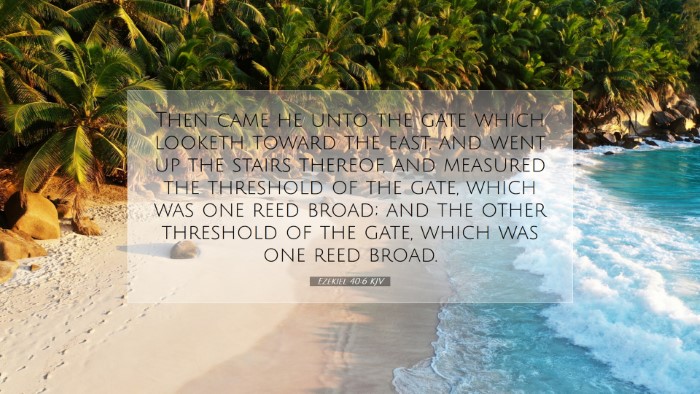Ezekiel 40:6 - Commentary Summary
Bible Verse: Ezekiel 40:6 - “Then came he unto the gate which looketh toward the east, and went up the stairs thereof, and measured the threshold of the gate, which was five cubits broad, and the other threshold of the gate, which was five cubits broad: the little chamber was six cubits broad on this side, and six cubits broad on that side: the little chambers were three, one on one side, and another on the other side: the three were of one measure; and the posts had one measure on this side and on that side.”
Introduction
This verse begins a detailed description of a vision given to Ezekiel concerning the new temple of God. As this vision unfolds, it is imperative to pay attention to the measurements, architectural features, and configurations represented throughout the text, as they are imbued with theological significance and prophetic implications.
The Context of the Vision
The context of this vision is crucial. Ezekiel is addressing the people of Israel during their exile, a time characterized by despair and disillusionment. Matthew Henry points out that this vision of the temple represents hope, restoration, and the divine presence that will once again dwell among His people.
Measurements and Their Significance
In Ezekiel 40:6, there is a specific mention of the "gate" which signifies access to the holy and the sacred space. Albert Barnes highlights that the measurements given, particularly the dimensions of the thresholds and chambers, are not merely architectural specifics but rather spiritual symbols. The recurrence of the number five—often associated with grace—observed in the broadness of the threshold exemplifies the idea that grace would be an essential characteristic of divine interaction with humanity.
Threshold as a Symbol
The thresholds of the gate can also be seen as a metaphor for the point of entry into fellowship with God. Adam Clarke emphasizes the importance of thresholds in the ancient Near Eastern context, where they were often seen as liminal spaces that marked the transition from the common profane world into the sacred realm. This sets a profound theological tone indicating the need for reverence as one approaches God.
Chambers and Their Significance
The “little chambers” mentioned in the passage, measuring six cubits on both sides, add another layer of meaning. The number six is significant in biblical numerology, often representing imperfection or incompleteness. However, in the context of this sacred space, it can also denote the idea of humanity. Matthew Henry explains that these chambers could signify dwelling places for the priests or places for the congregation to gather, thus illustrating God’s design for worship and community.
The Concept of Unity
Moreover, the reference to the three chambers adds to the theme of unity and completeness. The chamber design shows a well-planned structure, which Barnes sees as indicative of God’s order in worship and ecclesial structure. Such design illustrates God's desire for His people to gather in unity and harmony within the sacred spaces He provides.
Prophetic Implications
Ezekiel’s vision carries profound prophetic implications concerning the future restoration of Israel after exile. As noted by Clarke, the meticulous detailing is not pointless; it anticipates a time when the people would return and rebuild. This is not just about physical restoration but symbolizes a spiritual rejuvenation where proper worship and the acknowledgment of God’s holiness are reestablished.
God's Promise of Presence
This passage assures the people of Israel that despite their current predicament, God has not abandoned them. The architectural vision acts as a concrete promise that divinely ordained structures and forms of worship will once again be restored, allowing for the return of God’s Shekinah glory among His people. The presence of God in the temple signifies not only proximity but also His active engagement in the community of faith.
Application for Today
This ancient text still bears significance for contemporary readers, especially for pastors, students, and theologians. It encourages a reflection on the nature of worship and the care that should be given to the sacredness of spiritual spaces today. The commitment to honor God through worship and community reflects the same thought behind the design of the temple.
A Call to Reverence
The emphasis on measurement and structure beckons a call for reverence in how worship is conducted. In churches today, there is an invitation to consider how spaces are utilized for God’s glory, reminding us that our gatherings should reflect His holiness and the order that He desires among His people.
The Hope of Future Restoration
Additionally, this passage encourages hope in the promise of future restoration. Just as God had a plan for Israel, He has a purpose for His people today. In times of trial or spiritual barrenness, believers can take heart that God is actively working toward our restoration, bringing us into closer communion with Him.
Conclusion
Ezekiel 40:6 serves as a profound reminder of God's intricate involvement in worship, His enduring presence among His people, and the hope of restoration. This passage, echoed in the commentaries of Henry, Barnes, and Clarke, invites believers—and indeed all readers—to engage thoughtfully and reverently with the divine through the spaces crafted for worship, reflecting God’s grace, order, and community in their lives.


